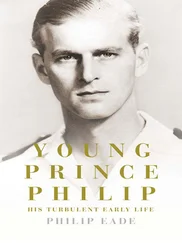Engaging with microhistory
This book was conceived at a particularly lively period of historical discourse and debate. The contemporary interpretation of Hitler’s war had begun to take shape in the 1980s. For example, Omer Bartov had noted, ‘The collaboration of the army with the Nazis and its role as the instrument which enabled Hitler to implement his policies, were most evident during the war against Russia.’ 11Since German rearmament in the 1950s, the story of the Wehrmacht’s complicity in Nazi crimes had been resisted. Bartov’s book was an uncomfortable reminder of the reality of the war, just as the Cold War was about to end. By the 1990s the literature was directly questioning the mass mobilisation of manpower as directed towards the Holocaust. Christopher Browning had observed, ‘… the German attack on the Jews of Poland was not a gradual or incremental program stretched over a long period of time, but a veritable blitzkrieg, a massive offensive requiring the mobilization of large numbers of shock troops.’ 12In Germany, the Wehrmachtausstellung opened in Hamburg, an exhibition that explained the Wehrmacht’s participation in Nazi crimes. A controversy over the content forced the exhibition to close and one of its organisers forced to step aside. 13Hannes Heer, having stepped down from the exhibition, published his interpretation of the crimes of the Wehrmacht on the eastern front and included his essay on combating partisans. 14In 2000, I was able to discuss my ideas with Heer and soon recognised we shared similar conclusions about Bandenbekämpfung, as a means to bringing ordinary soldiers to Holocaust killing without an overbearing ideological hierarchy.
The Holocaust was also embroiled in lively debates in the 1990s. For a long time, Raul Hilberg’s three-volume study framed Holocaust scholarship. 15Then Daniel Goldhagen exploded the accusation that Germans had been willing executioners, ‘… this book endeavours to place the perpetrators at the centre of the study of the Holocaust and to explain their actions.’ He argued the ‘… institutions of killing detailed the perpetrators’ actions, chronicled their deeds, and highlighted their general voluntarism, enthusiasm, and cruelty in performing their assigned self-appointed tasks.’ 16Since 1940, deportations had collected Jews from across occupied Europe concentrated them in Polish ghettos. In June 1941, the SS-Einsatzgruppen ranged across the rear areas in the wake of the German Army’s advance into Soviet Russia. 17In the Holocaust by Bullets, the SS killed or murdered upwards of two million Jews. 18From mid-June 1942 the destruction of the ghettos set off another wave of deportations to killing centres, but this also sparked outbursts of Jewish resistance. 19By December 1942, Hitler’s war against the Jews had escalated into a three-part process involving deportations, killing centres, and mass deaths. The evidence collected for Birds of Prey confirmed that Luftwaffe troops were assigned to this process.
There were other challenges to collecting evidence. During the period 1941–44, Białowieźa forest came within Bezirk Bialystok, a Nazi occupation zone administered from East Prussia. Göring’s ambition was to bind East Prussia and Ukraine in a common frontier with Bezirk Bialystok—a land bridge between the two. This represented a racialized colonial frontier of fewere than 3 million Germans under Erich Koch, ruling over 35 million people (Ukrainians, Belarussians, Poles, and others). This particular region was under-researched, but for Christian Gerlach’s published doctoral thesis, which is cited in the narrative of this book. 20In Hitler’s Empire (2008), Mark Mazower referred only to Ukraine and noted that the SS had difficulties working with Koch, who became virtually untouchable after turning East Prussia into a pro-Nazi state. 21Koch could rely on both Hitler and Göring to back him during internal squabbles. The greater challenge to my research, however, was the glaring absence of evidence about Bezirk Bialystok in the archives.
Before applying Historical GIS (explained in chapter 1) to the research, several attempts were made to construct a more traditional historical structure for the manuscript. The classic study of a German town, under Nazi rule, was also considered a viable option because it was compact. 22There were parallels of cultures, anthropology and localism. Allen claimed his ‘microcosm studies’ were unrepresentative of the Nazi regime but encouraged detailed analysis, which initially made it an important option. The closely relevant study was Christopher Browning’s Ordinary Men (1992), the study of a police battalion in the Holocaust. 23The book examined records from Federal German investigations, compiled from perpetrator interrogations and testimonials conducted more than twenty-five years after the war. Browning concluded the Nazis had unleashed a ‘blitzkrieg’ against the Jews, and ordinary men had carried out the killings. There were parallels of scale between police and Luftwaffe battalions, but whereas Browning could construct a case based on postwar testimonies, this was not available for a study of the Luftwaffe. Memory-based evidence has limitations, even with Federal investigations, but the greater problem was the lingering myth of the ‘clean Wehrmacht’, which included the Luftwaffe. Overcoming the myth was challenging.
The impact of the Historical GIS research is explained in detail in ‘Reading Maps Like German Soldiers’ (chapter 1), but it should be recognised that it was central to redirecting the research. The final microhistory version adapted for the book as a consequence of working with the GIS maps. Several scholars were identified as endorsing the benefits of microhistory long before its actual appearance as a specific methodology. Eric Hobsbawm defined ‘grassroots history, history from below or history of the common people’. This is referred to as Alltagsgeschichte by German historians or everyday history. 24Hosbawm’s Marxian interpretation of ‘history of the common people’ was a dialectic that might be applied to the history of the common soldier. In comparison to Hosbawm’s observations about the traditions of oral history to the working class, similar characteristics exist for the common soldier. The lowly soldier’s social structure was confined to a traditional militarised hierarchy, with orders from above forcing ‘confrontation or co-existence’ with officers and NCOs. To construct an interpretation of how the soldiery responded to Nazi dogma required a deeper understanding of the Wehrmacht beyond the battles and operations. This also involved an understanding of the cultural transformation from conventional combat to occupation, and vice versa, with some comprehension of how the soldiery survived the war beyond the usual glib interpretations of luck. Hosbawm’s ideas greatly suited the social history of the soldiery.
A wholly unexpected outcome from my research was the prominence of the German hunt in shaping events (on this see chapter 2). This coincided with a new study that advised: ‘military history, … is a promising candidate for … microhistory’, and later added ‘military history gives ample scope for the microhistorian.’ 25This was a significant theoretical development, but there were no examples to support the claim. The application of microhistory in Holocaust history also illuminated how the intimate scrutiny of Nazi perpetrators could transcend everyday life and everyday killing. 26These microhistories seemed to fit the environmental and forestry conditions of Białowieźa. The conditions had formed a peculiar impression of Białowieźa on the Germans, which they dubbed Urwald Bialowies. The Mammal Institute (Białowieźa) had published several important publications, which have discussed life during the occupation. 27Historically, forestry and hunting have been dominant themes in German literature for centuries, while foreign observers have been rather whimsical about the national fixation with ‘gloomy forests’. 28The weight of forestry literature threatened to overwhelm the research for this book, but it should be recognised that the power of Białowieźa dominated the collective mindset of the Germans. 29Throughout the Luftwaffe war diaries, there were constant references to Urwald Bialowies, in almost an arena like context. Birds of Prey has attempted to reproduce that notion of an arena of killing, where the Germans imagined themselves as warriors of antiquity.
Читать дальше












